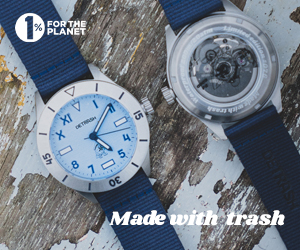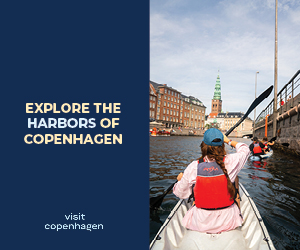As a student of medicine and then as a doctor, Mariano Spiezia found his studies left him with more questions than answers. So he sought to broaden his horizons, and looked at alternative routes to health; natural ways to complement conventional medicine. He found he preferred an individual perspective, rather than the more general conventional approach. Herbs always fascinated him; after all, they were used long before pharmacies opened, and are the basis of many widely used drugs today.
Homoeopathy and herbal medicine
I experienced some culture shock at first – the homoeopathic system is completely different to the conventional one I grew up with – but then I discovered a fascinating new approach to life, health and medicine, and most of the answers I’d been seeking. I decided to specialise in homoeopathy and herbalism. (In Italy, where I am from, it is compulsory to have a degree in medicine before specialising in homoeopathy.)
We are unique
Homoeopathy, founded around 200 years ago by a German doctor, Samuel Hahnemann, is a gentle, natural way to treat not only diseases but people, taking into account emotions and unique way the symptoms express themselves in each person. There are no protocols, but individual treatment matches the specific range of symptoms. The remedies used come from natural sources and are diluted in order to work very gently, interacting with our own amazing healing energy.
An honourable ancient practice
Herbal medicine has been, and in many ways still is, the foundation of modern medicine. Many of the modern ‘chemical therapeutic molecules’ come from herbal sources and mimic their structure. Some herbal remedies commonly used today are a thousand years old, and in some countries herbal medicine is still the main prescribed treatment. The world of herbs is captivating, and I have witnessed several times what our ancestors would probably have classified as miracles. I never stop learning about the health-giving properties nature can offer.
If correctly prescribed, both homoeopathy and herbal medicine can treat any health problem, and with no side effects. I recommend seeing a qualified homoeopath or herbalist for any illness or condition, but I want to share with you some widely used remedies perfect for your summer first aid kit or medicine cabinet. Homoeopathic remedies, herbal extracts, ointments and ‘granny’s recipes’ work very well in emergencies, as they naturally and quickly stimulate the body’s own healing processes. They are also suitable and safe for children, who generally respond well to both.
Here is what to keep handy, both to apply to the skin and to take internally as a first line of response. I have included a few options to choose from for each ailment.
Skin erythema (irritation, sunburn):
External
- Calendula and turmeric balm; hypericum cream; aloe vera gel. If you have access to a fresh plant, simply cut a young aloe leaf in half and use the fresh gel straight on the skin.
- Hypericum herbal tincture. Dilute 20 drops in a glass of cold water and apply topically for immediate relief.
Internal
- Arnica (6CH or 30CH): immediate first aid for any shock, including sunburn.
- Cantharis (6CH or 30CH): painful burning, possibly with an itching, raw sensation. The burn feels better from cold applications. If taken immediately, it can prevent blistering.
- Causticum (6CH or 30CH): burns that blister and ooze. This remedy can be used for ill effects from burns/old burns that do not heal.
- Urtica urens (6CH or 30CH): stinging pain, often itching but not severe. The burn feels worse with cold water, heat, exercise and on waking up.
{module In-article Banner}
Insect bites:
External
- Lavender essential oil, pure or diluted in olive oil; calendula oil; turmeric and calendula balm; used, cooled teabags applied to the area; cider vinegar applied with a cotton pad.
Internal
- Apis mellifica (6CH or 30CH): when the area affected is swollen, red, warm. The bites feel better with cold applications.
- Ledum palustre (6CH or 30CH): for insect bites or stings of any kind without significant swelling, including mosquito bites. The area is reddish blue and surrounded by an evident pale zone. Ice-cold applications bring a great improvement.
Skin infection/fungal infection:
External
- Colloidal silver; propolis balm; tea tree oil diluted in olive oil; cider vinegar; coconut oil.
Internal
- Echinacea tincture; probiotics; garlic tablets; oregano capsules.
Sleep disorders:
External
- 3 drops melissa essential oil massaged under your feet before going to bed; lavender essential oil diluted (1 drop of lavender and 1 of olive oil), rubbed gently on your temples.
Internal
- Melissa, passiflora or valerian tincture – 30 drops in a little water taken 20 minutes before bedtime.
Gut discomfort:
External
- Massage a few drops of lavender or melissa essential oil diluted in warm olive oil on your tummy, going from right to left.
Internal
- Ginger tea (add a thin slice of fresh ginger to 200ml of boiling water and drink warm); or camomile/peppermint tea.
- Probiotics such as acidophilus.
Diet: top tips to keep you energised this summer
As well as salad leaves and seasonal fruits, fresh green vegetables (such as spinach, broccoli, asparagus, watercress) are all brimming with valuable nutrients when eaten raw. Get the most out of the warmer season and supercharge your diet with fresh, raw, healthy food that will increase your energy levels, bring a sense of lightness and make your skin sparkle and glow.
Drink at least three litres of water per day, and fresh fruit juice every day to balance loss of minerals.
If you are feeling down and tired, have a handful of raisins or eat a banana to help with potassium; give it five minutes and you will feel the difference.
Enjoy your summer holiday!













